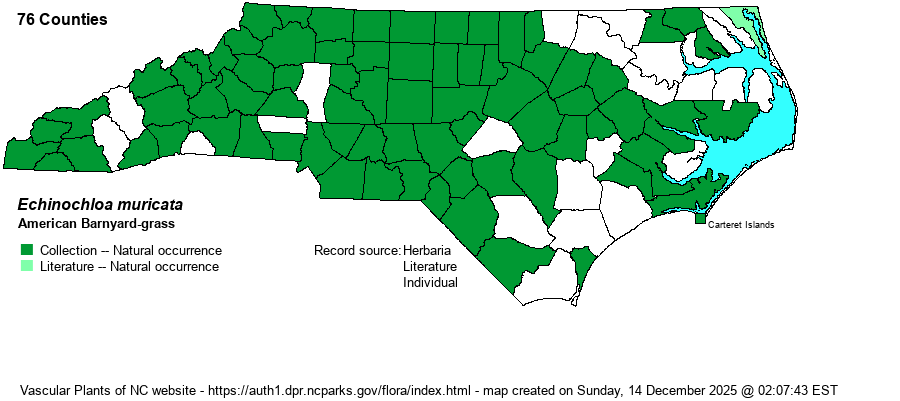| Author | (Beauvois) Fernald | |
| Distribution | Throughout the state, except scarce in the outer Coastal Plain and rare in maritime situations.
N.S. to B.C., south to FL and CA. | |
| Abundance | Frequent to common nearly throughout, though apparently rare on the Outer Coastal Plain. Gaps in the Coastal Plain likely will be filled over time. | |
| Habitat | River shores, sandbars, openings in alluvial forests, impoundments, interdune swales, roadsides. | |
| Phenology | Flowering and fruiting July-October. | |
| Identification | From the familiar, exotic Common Barnyard-grass (E. crusgalli), this native species must be identified with care. It differs in having papillose-based (like pimples) hairs on second glumes and sterile lemmas (vs. hairy or scabrous, but not papillose-based in E. crusgalli). In addition, the fertile lemma has a relatively thick, spiny tip that is persistent (vs. thin and deciduous and set off from the body by a line of tiny hairs in the exotic species). | |
| Taxonomic Comments | In some older texts, such as RAB (1968), it is lumped within E. crusgalli. The variety microstachya Wiegand is a minor variant that is not recognized here, though it is listed in Weakley (2018).
| |
| Other Common Name(s) | Rough Barnyard-grass | |
| State Rank | S4? [S5] | |
| Global Rank | G5 | |
| State Status | | |
| US Status | | |
| USACE-agcp | FACW link |
| USACE-emp | FACW link |

